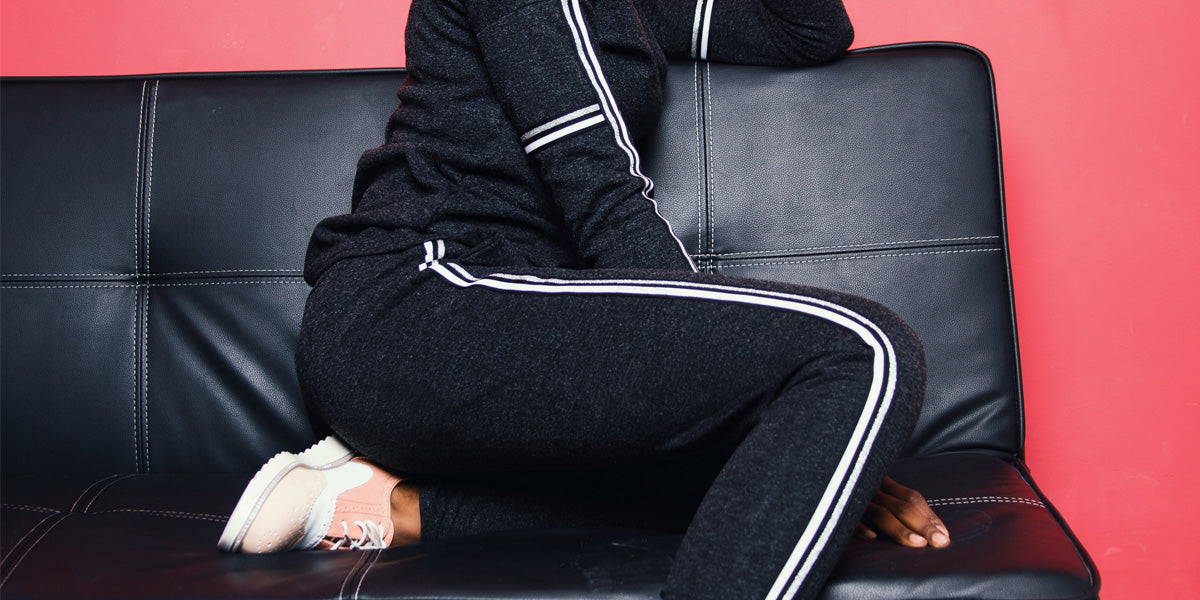
This is a comprehensive guide comparing PU leather and Faux leather.
As demand for animal-friendly choices and sustainability increases, an understanding of the differences between PU and faux leather is now essential.
The aim here is to analyze these leather alternatives in-depth, examine individual characteristics, how they are manufactured, their impact on the environment, and practicality which will assist you in selecting your perfect alternative leather.
Key Similarities & Differences
Similarities
- Both PU leather and faux leather are synthetic materials that have been designed to imitate genuine leather both in look and feel.
- PU leather and faux leather are both made without the use of animal hides. This makes them both a choice for anyone who chooses not to use animal products.
- Both materials are usually more durable than real leather, due to their resistance to staining, cracking, and fading.
- A wide range of design possibilities is available for both PU leather and faux leather, including finishes, textures, and colors.
- Both PU leather and faux leather are easily maintained and can be cleaned with a damp cloth and mild soap.
Differences
- PU leather is a specific type of faux leather and is made using a layer of polyurethane that is applied to a fabric back, Faux leather is a term used to describe various types of synthetic materials.
- The appearance of PU leather is more realistic in comparison to other types of faux leather, it has a close resemblance in texture, grain, and general aesthetics to real leather.
- Both faux leather and PU leather, are usually less breathable than real leather, which will affect comfort, especially during warmer weather or extended wear.
- PU leather is usually more costly than other faux leathers. This is because it is of a higher quality and has a more similar appearance to real leather whereas faux leathers are available within a broader price range.
- Both materials have less impact on the environment than genuine leather, however, the particular process of manufacture and the materials can vary, resulting in differences in their overall sustainability.
Sick of artificial leather? Why not choose a real leather bag instead, such as the premium range from Vonbaer.com.
Related guides:
- Leather
- Faux leather
- Vegan leather
- Bonded vs Real vs Faux leather
- Bonded leather
- Genuine leather
- Pleather
- Top grain leather
- Leather guide for beginners
- What is leather patina
- Vegetable tanned leather

What is PU Leather?
PU leather, or polyurethane leather, as it is also known, is a synthetic material made by applying a layer of polyurethane onto a fabric backing.
This creates the leather-like appearance and texture which is characteristic of PU leather.
The manufacturing method involves treating a base material, polyester or cotton for example, and applying a layer of polyurethane to enhance the material’s resistance and durability.
It is worth noting that although PU leather has several advantages including low maintenance and cost, the method of manufacture usually involves using petroleum-based materials and techniques which are energy intensive.
In addition, PU leather’s breathability is limited, and, in some cases, chemical odors may be a concern.
What is Faux Leather?

Faux leather, synthetic leather, or artificial leather, as it is sometimes known, is a different type of leather alternative which is popular.
Typically, it is made of a fabric base, either polyester or cotton, with a layer of polyvinyl chloride (PVC) or polyurethane (PU) applied.
Faux leather methods of production are complex processes that involve bonding or laminating the coating layer onto the base fabric.
There are several advantages to faux leather, not least its design versatility and animal-friendly nature.
Faux leather in comparison to PU leather, usually has better breathability.
Its long-term durability may be limited, however, and it can also be more costly than PU leather.
You may also need to clean it more carefully.
Related guides:
- Leather tanning
- What is artificial leather?
- What is full grain leather
- Where does leather come from
- Mushroom leather
- Napa leather
- Pebbled leather
- Leather grades
- How is leather made
- Suede

More Detailed Comparison
Aesthetics and Performance
Regarding aesthetics, both PU leather and faux leather attempt to imitate natural leather. Although PU leather frequently has a smooth and uniform appearance to the surface texture, faux leather can have a grainier texture that imitates natural leather.
As for performance, PU leather is renowned for its durability and resistance to use but is more resistant to scratching and color fading. Faux leather, although usually less durable, it offers a good level of performance relative to its quality and method of manufacture.
Consideration of intended use and expected longevity of the product is important when evaluating performance.
Environmental Impact
Assessment of the impact leather alternatives have on the environment must consider certain factors. The petroleum-based materials of PU leather along with its energy-intensive method of manufacture, can cause concern due to its reliance on non-renewable resources and carbon footprint.
Also challenging are the methods of PU product disposal due to their non-biodegradable properties.
Faux leather, however, in some respects, is seen as more environmentally friendly. There are manufacturers who make use of recycled or renewable materials in their faux leather production which, in turn, reduces their ecological footprint,
An important point to note is that in some variations of faux leather, PVC use can result in negative implications for the environment.
When the production, use, disposal, and entire life cycle of the product are considered, an informed decision becomes possible.
Related guides:
- PU leather
- Bonded leather vs Faux leather
- Italian leather
- How to tell if leather is real
- Buffalo leather
- Suede vs Leather
- What is Real Leather
Making an Informed Decision
Considerations for selecting the best leather alternative:
Durability
To determine the required level of durability, the intended use should be assessed.
If you need a durable material that will withstand heavy use, a good choice may be PU leather, renowned for its durability and resistance to wear and tear, but if you need material for fashion purposes or occasional use, the durability of faux leather will suffice.
Affordability
When selecting either PU or faux leather, consider your budget. PU leather is less expensive than natural leather making it a cost-effective selection, whereas the price varies for faux leather according to the process of manufacture and quality.
The balance between cost and quality should be considered along with your budget.
Maintenance
Familiarize yourself with cleaning and care instructions for each type of alternative leather. PU is frequently easier to care for and needs only a simple wipe with a damp cloth, but faux leather may require specific methods of cleaning and specialized products may be needed for some types of products.
Assess your ability and willingness to follow the instructions recommended for maintenance to keep your alternative leather in good condition.
Aesthetics
Ensure that visual appeal and texture match your preferences and are suitable for your intended use. A smooth, uniform appearance is usual for PU leather which gives a modern, sleek look.
On the other hand, faux leather offers various finishes and textures. It also offers options that imitate the grains of natural leather. Select the most suitable for your style preference and desired outcome.
Environmental Impact
The environmental implications of each type of alternative leather should be considered. Compared to natural leather, both PU and faux leather are considered more sustainable. Their environmental footprints are different.
Energy-intensive methods of manufacture and petroleum-based materials are relied upon by PU leather which contributes to the consumption of non-renewable resources and emissions. Faux leather, more so those made with renewable or recyclable materials, have less of an ecological impact.
Make a selection aligning with your sustainability values and goals.
Conclusion
We hope you enjoyed our article on pu vs faux leather.
If you have any questions or comments, contact us at info@vonbaer.com, or leave them in the comments.
Want to read more? Check out our Leather pages.




Leave a Comment
Your email address will not be published.